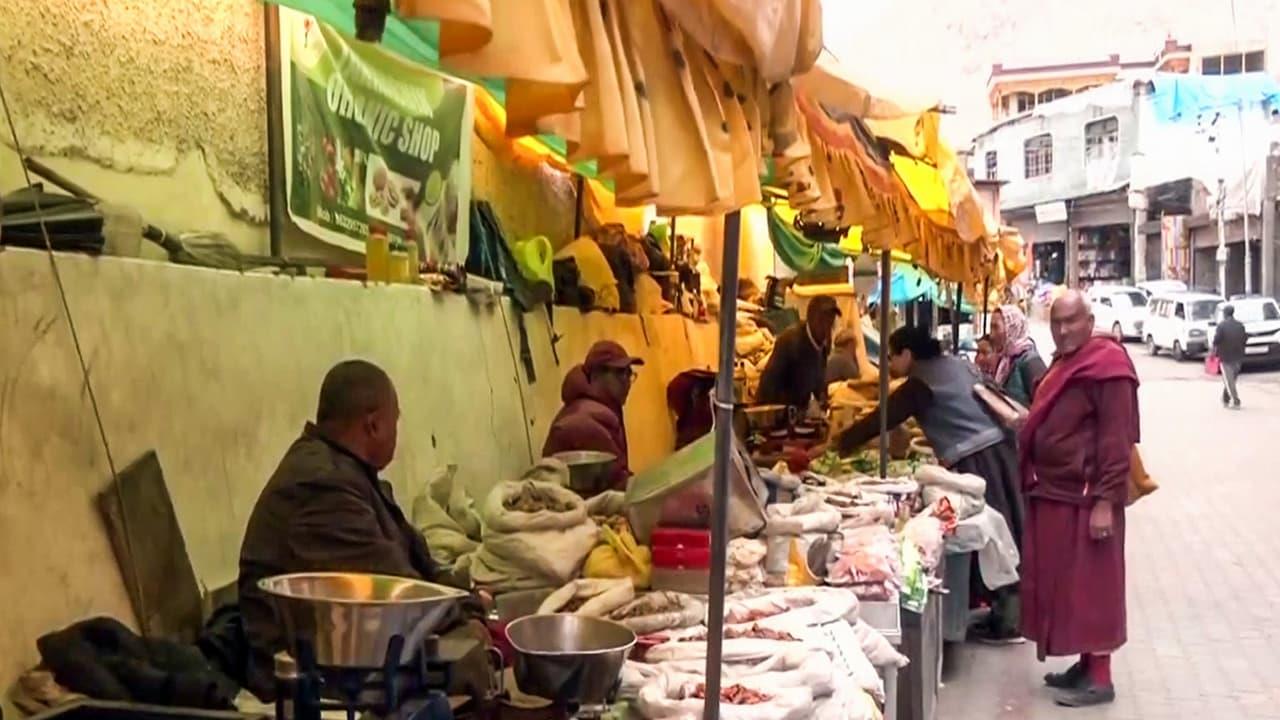
Ladakh GST Cuts Empower Artisans, Farmers, And Tourism Sectors
New Delhi [India], October 22 (ANI): The sweeping GST rationalisation reforms that took effect this Navratri have benefits for all walks of people in some form or the other.
Impact Across Ladakh's Economy
The recent GST reduction across a wide variety of products and services will, similar to other states and UTs, also impact Ladakh's rich economy, bringing relief to artisans, farmers, and small enterprises. Together, these reforms will support livelihood generation, cultural preservation, and the sustainable growth of Ladakh's economy. A minimum 5 per cent GST on Pashmina, Namda rugs, and woodcrafts will help over 10,000 artisans.
Dairy and organic farming see better earnings and competitiveness through reduced GST; over 6,000 farming families engaged in apricot cultivation to benefit from the GST reforms.
A reduced 5 per cent GST on hotel tariffs <=₹7,500 set to make travel more affordable and sustain the livelihood of over 25,000 people. GST cuts to support yak dairy, wool producers, and organic farming will also promote self-sustainability in Ladakh.
Pashmina Wool and Artisans' Income
One of Ladakh's most valuable traditional crafts, Pashmina wool is produced in the Changthang region in Leh, sustaining over 10,000 nomadic herders. Pashmina is known for its warmth, softness, and fineness, and is used to make premium shawls, stoles, and garments. The GST reduction from 12% to 5% is expected to boost the competitiveness of authentic Ladakhi pashmina against imported or machine-made alternatives, improving income stability and export potential.
Reviving Handwoven Woollens and Namda Rugs
Handwoven woollens and Namda rugs from Leh and Kargil represent Ladakh's rich tradition of wool craftsmanship. The GST reduction from 12% to 5% lowers production costs and encourages the revival of traditional handicraft practices. "This is expected to provide significant benefits to local artisans and cooperatives engaged in wool processing and rug making," the government said.
Wool felt products and woollen accessories from Leh and Changthang, such as felt boots, hats, and gloves, are used locally and popular among tourists. The GST reduction supports small-scale, seasonal cottage industries and strengthens Ladakh's economy.
Traditional Carpentry and Handicrafts
Traditional Ladakhi carpentry from Leh and Kargil features intricately carved wooden altars, window frames, and furniture. The GST reduction from 12% to 5% makes these items more affordable and competitive, supporting craftsmen from marginalised communities.
Ladakhi Thangka paintings, crafted in monasteries in Leh, Alchi, and Hemis, are traditional Buddhist scroll artworks. The GST reduction makes these intricate paintings more accessible and economically viable, helping preserve a vital part of Ladakh's cultural heritage.
Local tourism and homestays across Leh, Nubra, Pangong, and Kargil support Ladakh's service economy, directly employing over 25,000 people. The GST reduction on hotel tariffs up to Rs 7,500 per night makes travel and accommodation more affordable, supporting eco-tourism and homestays.
Support for Apricot Cultivation
Ladakh is India's largest apricot producer, with Kargil, Leh, and the Nubra Valley as main hubs. The GST reduction benefits over 6,000 farming families engaged in apricot cultivation and processing, improving competitiveness and income opportunities.
Sea buckthorn, cultivated across Nubra Valley, Leh, and Changthang, is known for its medicinal properties. Women-led SHGs play a key role in processing these berries. The GST reduction enhances the competitiveness of locally made products, making them more affordable.
Yak cheese and milk products from Changthang and Nubra benefit from the GST reduction, supporting self-sustainability. Organic farming in Sham Valley and Kargil gains from lower costs, encouraging wider adoption of sustainable practices.
Government Statement on Economic Transformation
"The recent GST reforms mark a transformative step for Ladakh's economy by empowering its traditional artisans and farmers... Together, these reforms will preserve Ladakh's rich cultural heritage, strengthen eco-friendly industries, and make local products more affordable and marketable," the government concluded.
Historic GST Rationalisation
In a historic move, the GST Council reduced the structure from four slabs (5%, 12%, 18%, 28%) to two main rates-5% (merit rate) and 18% (standard rate) with a 40% special rate for sin/luxury goods, effective September 22, 2025. The changes were announced as part of next-generation GST rationalisation to reduce the tax burden and stimulate economic growth.(ANI)Disclaimer: Except for the headline, this story has not been edited by Asianet Newsable English staff and is published from a syndicated feed.
Legal Disclaimer:
MENAFN provides the
information “as is” without warranty of any kind. We do not accept
any responsibility or liability for the accuracy, content, images,
videos, licenses, completeness, legality, or reliability of the information
contained in this article. If you have any complaints or copyright
issues related to this article, kindly contact the provider above.





















Comments
No comment